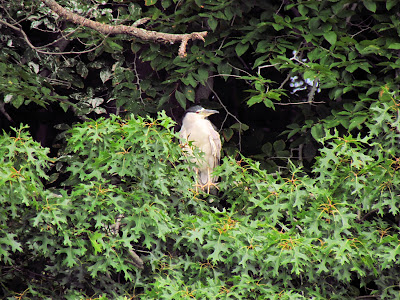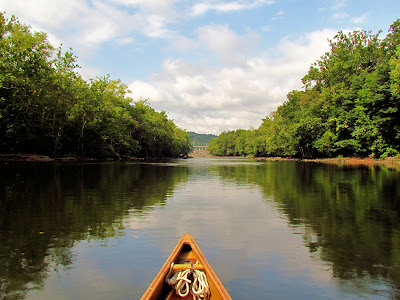I roll my pants to my knees and wade out to keep the canoe off of the rocks while I load my gear. I end up wading in thigh deep. The rolled up pants are just futile extra credit. With my pack clipped in (I lanyard my gear on flat water - in a capsize it will float free, but stay connected to the boat) I quickly take a kneeling position and paddle out into deeper water.
I ride and roll on aft quartering waves until I pass Pond Point. There, the shallow bay calms some and I can take off my shoes and rinse them clean of the broken shells and gravel that make up what little beach there is where I put in. The waves pick up as I reach the far end of the bay, Merwin Point, but after rounding it everything is rather calm.
 |
| Milford Harbor |
I take a turn up and back in Milford Harbor if only because I haven't been there since spring. It is, once again, filled with sailboats and cruisers. Tomorrow it will be a busy port, but today it is somewhat sleepy with a few oystermen tending to their boats and some pleasure boaters prepping for Labor Day weekend mayhem. The highlights are three osprey turning lazy circles above and a black crowned night heron perched ten feet up in a tree on the shore of Webster's Forest.
 |
| Black crowned night heron |
That chore finished, I turn up Gulf Pond. The pond and the harbor share the same entrance to the sea. There are still some egrets and herons at the edge of the grasses, the tide not yet submerging all of the mud flat. At the top end, I ride the flood into the Indian River, although I don't feel like going up it too far. I sit and watch, for anything.
I challenge the flood current to get back into the pond and lose. It takes wading and stumbling and swearing and lining the canoe for about 15 feet to get past the fast water and back into the pond, where I take out and portage the mile and a half home...just because I feel like walking.

































